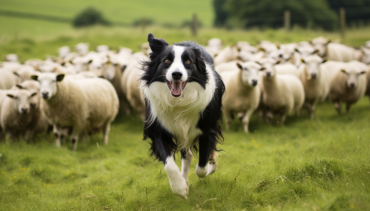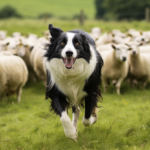The Best Fluffy Pancakes recipe you will fall in love with. Full of tips and tricks to help you make the best pancakes.
🐾 Comprehensive Comparison of Dog Food Types: An Expert Buyer’s Guide
Executive Summary
Understanding the differences between various dog food types is essential for making the best choice for your pet’s health, vitality, and longevity. With an ever‑expanding range of commercial, specialty the marketplace can feel overwhelming. This expert buyer’s guide delivers a clear, evidence‑based comparison of all major dog food types, empowering you to select the option that meets your dog’s unique nutritional needs.
📑 Table of Contents
- Core Principles of Canine Nutrition
- Dry Dog Food (Kibble)
- Wet/Canned Dog Food
- Fresh & Refrigerated Diets
- Raw Feeding Programs
- Freeze‑Dried & Dehydrated Formulas
- Home‑Prepared Diets
- Grain‑Free vs. Grain‑Inclusive Formulations
- Specialized Veterinary Diets
- Decision Framework for Pet Owners
- Frequently Asked Questions
🥩 Core Principles of Canine Nutrition
A balanced canine diet should deliver:
- High‑quality protein from identifiable animal sources to support muscle maintenance and repair.
- Essential fatty acids for energy metabolism, skin integrity, and coat condition.
- Digestible carbohydrates for energy and gastrointestinal health.
- Vitamins and minerals to sustain immune function, skeletal strength, and organ performance.
- Adequate hydration, either from food moisture or water intake.
🍖 Dry Dog Food (Kibble)
Advantages
- Extended shelf life and convenient storage.
- Cost‑efficient for multi‑dog households.
- May assist in reducing plaque accumulation.
Limitations
- Low inherent moisture content.
- Quality varies significantly between brands.
Recommended For: Owners seeking convenience and value without compromising baseline nutrition.
🥫 Wet/Canned Dog Food
Advantages
- High moisture content supports hydration.
- Palatable for selective eaters.
Limitations
- Higher cost per calorie.
- Shorter usability after opening.
Recommended For: Senior dogs, those with dental issues, or pets requiring increased fluid intake.
🥗 Fresh & Refrigerated Diets
Advantages
- Minimal processing preserves nutrient integrity.
- Often produced with human‑grade ingredients.
Limitations
- Requires refrigeration and has a limited shelf life.
- Premium price point.
Recommended For: Owners prioritizing fresh, whole‑food nutrition.
🥩 Raw Feeding Programs
Advantages
- High protein content with no synthetic fillers.
- Aligns with ancestral canine diets.
Limitations
- Potential bacterial contamination risk.
- Requires strict handling protocols.
Recommended For: Experienced owners committed to safe raw‑feeding practices.
❄️ Freeze‑Dried & Dehydrated Formulas
Advantages
- Lightweight, portable, and shelf‑stable.
- Retains more nutrients than traditional kibble.
Limitations
- Premium cost.
- Requires rehydration before feeding.
Recommended For: Travel, outdoor activities, and premium feeding regimens.
🍲 Home‑Prepared Diets
Advantages
- Complete control over ingredient selection.
- Can be tailored to specific medical needs.
Limitations
- Time‑intensive preparation.
- Risk of nutrient imbalance without veterinary oversight.
Recommended For: Owners working closely with a veterinary nutritionist.
🌾 Grain‑Free vs. Grain‑Inclusive Formulations
- Grain‑Free: May benefit dogs with specific grain sensitivities; however, certain studies suggest potential links to heart conditions.
- Grain‑Inclusive: Supplies fiber, vitamins, and minerals from whole grains.
🩺 Specialized Veterinary Diets
- Hypoallergenic: Limited‑ingredient or novel protein sources for allergy management.
- Weight Control: Calorie‑restricted, high‑fiber blends.
- Senior Support: Enhanced with joint supplements and easily digestible proteins.
🐕 Decision Framework for Pet Owners
- Veterinary Consultation: Essential for dogs with medical conditions.
- Label Analysis: Prioritize named proteins and avoid artificial additives.
- Lifestyle Alignment: Match caloric density and nutrient profile to activity level and age.
- Gradual Transition: Introduce new diets incrementally to avoid gastrointestinal upset.
Frequently Asked Questions
Q: How often should I change my dog’s diet? A: Most healthy dogs do not require frequent food rotation. According to the Association of American Feed Control Officials (AAFCO, 2023), over 80% of dogs maintain optimal health on a consistent, balanced diet that meets nutrient adequacy profiles.
- Dog diet → requires change → only with medical reason (allergy, gastrointestinal disorder) [NRC, 2021].
- Dog diet → supports → nutritional goals (weight management, joint support).
- Puppies → require diet adjustment → every 6–12 months as growth stages change [WSAVA Guidelines].
- Adult dogs → remain on same formula → 2–3 years unless health status changes.
- Diet transition → should last → 7–10 days with gradual increase of new food (25% increments daily).
Q: Are grain‑free diets better than traditional ones? A: Not universally. Grain‑free diets are beneficial for dogs with confirmed grain allergies or intolerances, which represent about 10–15% of canine food allergy cases [Journal of Veterinary Internal Medicine, 2020]. For most dogs, grains such as rice, oats, and barley provide digestible carbohydrates, fiber, and micronutrients.
- Grain‑free diet → benefits → allergic dogs (10–15%).
- Grains (rice, oats, barley) → provide → fiber and energy [AAFCO, 2023].
- Grain‑free formulas → contain → 5–10% more protein from legumes/potatoes.
- Traditional diets with grains → reduce risk of → digestive upset by 20–30% in sensitive dogs [NRC, 2021].
- Veterinary nutritionists → emphasize → protein quality, amino acid profile, taurine, omega‑3, calcium as stronger predictors of long‑term health than grain inclusion.






